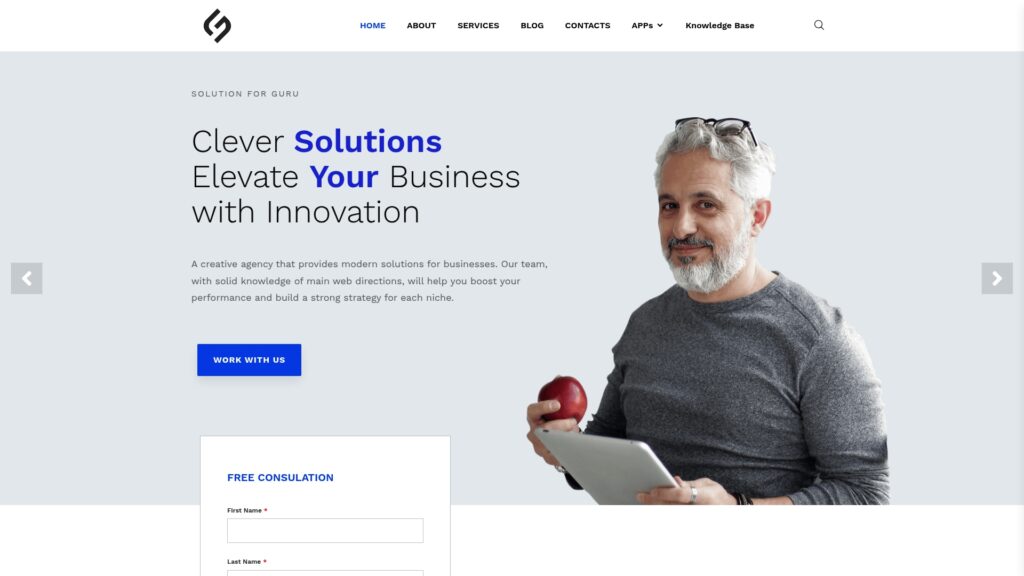How to Drive CRM Adoption Across Your Team

Investing in a powerful CRM system represents only half the battle for organizational success. The real challenge lies in ensuring your team consistently uses the platform to its full potential. Many businesses discover that even the most sophisticated CRM technology fails to deliver promised results when team members resist adoption or use the system inconsistently. Understanding how to drive genuine user engagement transforms CRM from an expensive database into a competitive advantage that enhances customer relationships and accelerates business growth.
Table of Contents
- Quick Summary
- What is CRM Adoption and Why Does It Matter?
- What Are the Common Barriers to CRM Adoption?
- How Can Leadership Support Drive CRM Adoption?
- What Role Does Training Play in CRM Adoption Success?
- How Do You Measure CRM Adoption Rates?
- What Advanced Techniques Sustain Long-Term CRM Adoption?
- Summing up
- Frequently Asked Questions
- Benefits of Cooperation with Solution for Guru Company
Quick Summary
CRM adoption refers to the extent to which team members consistently use your CRM system as their primary tool for managing customer relationships and daily workflows. Successful adoption requires a comprehensive strategy addressing leadership commitment, effective training, user-friendly configuration, clear processes, ongoing support, and cultural transformation. Leading platforms like Salesforce CRM, Pipedrive CRM, Bigin by Zoho CRM, Zoho CRM, and Creatio CRM each offer unique features that can either facilitate or hinder adoption depending on implementation approach. Organizations that prioritize adoption alongside technology selection achieve significantly higher ROI, with studies showing that companies with adoption rates above 90% realize up to five times greater benefit from their CRM investment compared to those with poor adoption.
What is CRM Adoption and Why Does It Matter?
CRM adoption encompasses more than simply having team members log into the system occasionally. True adoption means your CRM becomes the central hub for all customer-related activities, where team members naturally turn first when managing interactions, updating information, or seeking customer insights. It represents a fundamental shift in how your organization operates, moving from fragmented, individual approaches to coordinated, data-driven customer management.
At its core, CRM adoption measures how consistently and completely your team uses the platform for its intended purposes. This includes entering new leads and contacts, logging all customer interactions, updating deal statuses, completing assigned tasks, and referencing customer histories before engagements. High adoption means the CRM contains accurate, current information reflecting actual business activities, while poor adoption results in incomplete data that undermines the system’s value.
The importance of CRM adoption cannot be overstated. Organizations invest substantial resources in CRM technology, often spending tens or hundreds of thousands of dollars on licenses, implementation, and customization. However, these investments deliver returns only when teams use the systems effectively. Research consistently demonstrates that adoption rates directly correlate with CRM success, with high-adoption organizations reporting improved sales productivity, enhanced customer satisfaction, better forecast accuracy, and increased revenue growth.
Furthermore, poor adoption creates a vicious cycle where incomplete data reduces system value, which further discourages usage, leading to even worse data quality. Sales representatives who find outdated contact information or missing interaction histories lose confidence in the CRM, reverting to personal spreadsheets and email folders. This fragmentation prevents the collaboration and visibility that constitute the primary benefits of centralized customer management systems.
The role of CRM systems
Salesforce CRM
Different CRM platforms present varying adoption challenges based on their complexity, user interface design, and feature sets. Salesforce CRM offers unparalleled power and flexibility, but this sophistication can overwhelm users unfamiliar with enterprise software. Organizations implementing Salesforce must invest heavily in training and change management to achieve strong adoption, though the platform’s extensive customization capabilities enable tailoring that improves user acceptance when properly leveraged.
Pipedrive CRM
Pipedrive CRM was designed specifically with adoption in mind, featuring an intuitive visual interface that sales representatives find natural and engaging. Its pipeline-centric approach aligns closely with how sales professionals think about their work, reducing the learning curve and encouraging consistent usage. Consequently, organizations often achieve higher initial adoption rates with Pipedrive compared to more complex alternatives, though they may sacrifice advanced capabilities in exchange for simplicity.
Bigin by Zoho CRM
For small businesses and startups, Bigin by Zoho CRM removes many barriers to adoption through its streamlined feature set and simplified interface. By eliminating overwhelming options and focusing on essential CRM functions, Bigin enables teams without prior CRM experience to become productive quickly. This accessibility proves crucial for organizations where team members lack technical sophistication or dedicated time for extensive training.
Zoho CRM
Zoho CRM balances capability with usability, providing sufficient power for growing businesses while maintaining reasonable complexity levels. Its modular approach allows organizations to start simple and progressively adopt advanced features as users gain comfort and proficiency. This graduated adoption pathway helps teams avoid the overwhelming feeling that derails implementation of more feature-rich platforms.
Creatio CRM
Creatio CRM addresses adoption through extensive customization capabilities that enable organizations to configure the platform to match existing workflows rather than forcing process changes. This flexibility can significantly improve adoption when teams continue working in familiar ways, though it requires careful implementation to avoid creating overly complex configurations that ultimately hinder rather than help user acceptance.
CRM Platforms Comparison Table
Ultimately, CRM adoption represents a change management challenge as much as a technology implementation. Organizations must approach it holistically, addressing technical, procedural, and cultural dimensions to create an environment where consistent CRM usage becomes the path of least resistance rather than an additional burden on already busy team members.
What Are the Common Barriers to CRM Adoption?
Understanding the obstacles that prevent effective CRM adoption enables organizations to proactively address these challenges during implementation and ongoing management. While specific barriers vary across organizations, several common themes emerge consistently.
Complexity and Poor User Experience
Perhaps the most significant adoption barrier stems from CRM systems that users perceive as complicated, unintuitive, or cumbersome. When team members struggle to complete routine tasks, when navigation feels confusing, or when systems require excessive clicks to accomplish simple goals, frustration builds and usage declines. This challenge particularly affects comprehensive platforms that prioritize functionality over simplicity.
Salesforce CRM, despite its market leadership, frequently faces adoption challenges related to perceived complexity. New users often feel overwhelmed by the extensive feature set, customization options, and administrative settings. Organizations implementing Salesforce must simplify interfaces through careful configuration, hiding unnecessary fields and features while emphasizing essential functions relevant to specific user roles.
Conversely, Pipedrive CRM minimizes complexity barriers through its focused, visual approach. Users immediately understand the pipeline view and can intuitively drag deals between stages. However, organizations requiring functionality beyond core sales pipeline management may find Pipedrive’s simplicity limiting, forcing workarounds that ultimately complicate adoption.
Lack of Clear Value Proposition
Team members resist CRM adoption when they don’t understand how the system benefits them personally. If CRM feels like additional work benefiting only management or other departments, users will complete minimum required activities while conducting actual work through familiar tools. This barrier proves particularly challenging with sales representatives who view CRM data entry as administrative burden detracting from revenue-generating activities.
Overcoming this barrier requires clearly articulating individual benefits such as automated follow-up reminders that prevent missed opportunities, mobile access enabling productivity between meetings, or quick access to customer histories that improve conversation quality. When users recognize that CRM saves time, enhances effectiveness, or simplifies their work, adoption improves dramatically.
Insufficient Training and Support
Organizations frequently underestimate training requirements, providing brief initial sessions and expecting users to achieve proficiency independently. This approach leaves team members feeling unsupported and uncertain about proper CRM usage. Without ongoing training addressing advanced features and best practices, users plateau at basic proficiency levels, never realizing full platform potential.
Zoho CRM and Creatio CRM offer extensive documentation and learning resources, but passive availability doesn’t ensure utilization. Organizations must create structured training programs, designate internal experts providing peer support, and allocate time for continued learning rather than assuming initial training suffices.
Poor Data Quality
CRM systems containing inaccurate, outdated, or incomplete information create adoption barriers by reducing user confidence. When sales representatives encounter wrong phone numbers, outdated contact information, or missing interaction histories, they lose trust in the system and revert to personal information repositories. This creates a self-reinforcing problem where poor data drives low adoption, which further degrades data quality.
Bigin by Zoho CRM addresses this through simplified data structures that make maintenance more manageable for small teams, while Salesforce CRM provides sophisticated validation rules and duplicate detection mechanisms preventing quality issues. However, technology alone cannot ensure data quality without organizational commitment to accuracy and regular cleansing activities.
Resistance to Change
Fundamental human resistance to change represents perhaps the most challenging adoption barrier. Team members comfortable with existing processes resist learning new systems, particularly when they’ve developed personal methods proven effective over years. This resistance intensifies when implementation feels imposed rather than collaborative, or when users perceive CRM as management surveillance tool rather than productivity enhancement.
Change management strategies must acknowledge these concerns, involving users in implementation decisions, emphasizing benefits over mandates, and celebrating early adopters who model successful usage. Leaders who demonstrate personal CRM commitment and address resistance empathetically rather than dictatorially achieve substantially better adoption outcomes.
Technical Issues and Performance Problems
System reliability directly impacts adoption. Slow page loads, frequent errors, or mobile app crashes frustrate users and provide excuses for avoiding the platform. Even excellent training and clear value propositions cannot overcome adoption barriers created by poor system performance or technical instability.
Cloud-based platforms like Pipedrive CRM, Zoho CRM, and Salesforce CRM generally provide reliable performance through professionally managed infrastructure. However, organizations must ensure adequate internet connectivity and address integration issues that cause system slowdowns or data synchronization problems affecting user experience.
Inadequate Customization or Over-Customization
CRM systems configured with default settings rarely match organizational needs perfectly, creating friction when workflows don’t align with actual business processes. Conversely, excessive customization can create overly complex systems where users face dozens of fields, multiple record types, and convoluted processes that obscure core functionality.
Creatio CRM provides extensive customization capabilities that enable perfect process alignment when implemented thoughtfully, but these same capabilities can create adoption-killing complexity when overused. Finding the right customization balance requires understanding user needs, prioritizing simplicity, and resisting the temptation to accommodate every special case through configuration.
How Can Leadership Support Drive CRM Adoption?

Leadership commitment represents the single most critical factor determining CRM adoption success. When executives and managers consistently use the CRM, emphasize its importance, and hold teams accountable for proper usage, adoption rates soar. Conversely, leadership indifference or inconsistent commitment undermines adoption efforts regardless of training quality or system capabilities.
Model Desired Behaviors
Leaders must exemplify the CRM usage they expect from team members. This means executives and managers logging their own activities, referencing CRM data during meetings, and visibly relying on the system for decision-making. When team members observe leaders using personal spreadsheets, requesting information available in the CRM through email, or making decisions without consulting system data, they conclude that CRM adoption isn’t truly important despite official messages.
Salesforce CRM and Zoho CRM provide executive dashboards and mobile apps that enable leadership visibility without requiring extensive data entry, making it easier for executives to demonstrate commitment through regular system usage. Leaders should reference these dashboards during meetings, ask questions based on CRM data, and celebrate insights discovered through system analysis.
Establish Clear Expectations and Accountability
Vague guidance like “please use the CRM” proves far less effective than specific, measurable expectations. Leaders should define precisely what constitutes proper usage, such as “log all customer interactions within 24 hours,” “update deal stages weekly,” or “enter all new leads within one hour of receipt.” These clear standards eliminate ambiguity about requirements and enable objective assessment of compliance.
Furthermore, leaders must create accountability mechanisms ensuring expectations translate into behavior. This might include reviewing CRM activity reports during one-on-one meetings, incorporating adoption metrics into performance evaluations, or establishing consequences for persistent non-compliance. However, accountability should emphasize support and improvement rather than punishment, addressing underlying barriers rather than simply demanding compliance.
Provide Resources and Remove Obstacles
Leadership support extends beyond verbal encouragement to include tangible resource allocation. This means budgeting for adequate training, dedicating time for CRM activities without unrealistic productivity expectations during transition periods, and investing in necessary integrations or customizations that improve user experience. When leaders ask for CRM adoption while simultaneously cutting training budgets or maintaining workload levels that prevent proper data entry, mixed messages undermine adoption efforts.
Additionally, leaders must actively identify and remove adoption obstacles. This requires soliciting user feedback, responding promptly to reported issues, and demonstrating willingness to adjust configurations or processes when current approaches prove problematic. Team members who see leaders taking their concerns seriously and making genuine efforts to address problems become more invested in adoption success.
Communicate Vision and Benefits Consistently
Leaders should regularly articulate why CRM adoption matters to the organization and individual team members. This communication should connect CRM usage to strategic objectives, customer experience improvement, and business growth rather than presenting it as bureaucratic requirement. Storytelling proves particularly effective, with leaders sharing specific examples of how CRM data enabled better decisions, prevented lost opportunities, or enhanced customer satisfaction.
Pipedrive CRM particularly lends itself to benefit communication around sales efficiency and pipeline visibility, while Creatio CRM enables messaging around process improvement and operational excellence. Tailoring communication to platform strengths and organizational priorities ensures messages resonate with team members.
Celebrate Success and Recognize Champions
Public recognition of individuals and teams demonstrating excellent CRM adoption reinforces desired behaviors and creates positive peer pressure. Leaders should identify and celebrate adoption champions who consistently maintain high-quality data, help colleagues with system questions, or discover innovative ways to leverage CRM capabilities. This recognition can take various forms, from public acknowledgment during meetings to formal awards or tangible rewards.
Moreover, sharing success stories where CRM usage directly contributed to positive outcomes builds momentum and enthusiasm. When sales representatives hear how colleagues won deals through CRM insights, or when support teams learn how customer histories enabled exceptional service, they develop intrinsic motivation for proper system usage beyond external mandates.
What Role Does Training Play in CRM Adoption Success?
Comprehensive, ongoing training forms the foundation of successful CRM adoption. No matter how intuitive the platform or committed the leadership, team members cannot effectively use systems they don’t understand. Training strategies must address diverse learning styles, varying proficiency levels, and evolving needs as both users and systems mature.
Initial Onboarding Training
New user onboarding establishes first impressions that significantly influence long-term adoption. Effective initial training covers essential functions needed for daily work without overwhelming users with advanced features or administrative details. Sessions should emphasize hands-on practice with realistic scenarios rather than abstract feature demonstrations, enabling users to immediately apply learning to actual work situations.
Bigin by Zoho CRM requires minimal initial training due to its simplified feature set, typically enabling productivity within hours. However, even simple systems benefit from structured onboarding that establishes proper habits and prevents bad practices that create problems later. Salesforce CRM demands more substantial initial training, often requiring multiple sessions across several weeks to achieve basic proficiency given its extensive capabilities.
Training should be role-specific, focusing on functions relevant to particular job responsibilities. Sales representatives need pipeline management and activity logging training, while customer service teams require case management and knowledge base training. Marketing teams benefit from campaign and lead management instruction. Generic training covering all features proves less effective than targeted instruction addressing specific user needs.
Ongoing Skill Development
Initial training establishes foundational competency, but users require continued learning opportunities to develop advanced skills and discover productivity-enhancing features. Organizations should offer regular training sessions introducing new capabilities, sharing best practices, and addressing common usage challenges. These sessions keep CRM top-of-mind and demonstrate ongoing organizational commitment to user success.
Furthermore, as CRM platforms evolve through regular updates adding new features and capabilities, ongoing training ensures users stay current with enhanced functionality. Zoho CRM, Pipedrive CRM, and Salesforce CRM all release regular updates, and organizations must help users understand and adopt valuable new features rather than continuing to use the system exactly as configured at initial implementation.
Multiple Training Formats
People learn differently, requiring varied training approaches to maximize effectiveness. Live instructor-led sessions enable interaction and real-time question answering but require schedule coordination and may not suit all learning preferences. Self-paced online courses provide flexibility but lack personal interaction and accountability. Video tutorials offer visual learning but may not address specific organizational configurations.
Effective training programs combine multiple formats, offering live sessions for initial onboarding, video libraries for reference, written documentation for quick lookups, and hands-on sandbox environments for practice. Creatio CRM and Salesforce CRM provide extensive documentation and training resources through online learning platforms, which organizations can supplement with custom materials addressing specific configurations and processes.
Just-in-Time Support
Even after comprehensive training, users inevitably encounter situations where they need guidance on specific tasks or unusual scenarios. Just-in-time support mechanisms enable users to get help precisely when needed without waiting for scheduled training sessions. This support might include in-app guidance, searchable knowledge bases, quick reference guides, or designated super users providing peer assistance.
Contextual help features within the CRM itself prove particularly valuable, offering tooltips explaining fields, guided walkthroughs for complex processes, and intelligent suggestions based on user actions. These features provide support without requiring users to leave their workflow or search external documentation.
Measuring Training Effectiveness
Organizations should assess training effectiveness through both qualitative and quantitative measures. Surveys can gauge user confidence and satisfaction with training programs, while system usage analytics reveal whether training translates into actual behavior change. Low post-training adoption rates indicate that training content, delivery, or reinforcement requires adjustment.
Additionally, tracking support tickets and help desk requests identifies common confusion points that training should address more effectively. When multiple users ask similar questions, training gaps become apparent and organizations can develop targeted interventions addressing specific knowledge deficits.
How Do You Measure CRM Adoption Rates?
You cannot improve what you don’t measure. Establishing clear metrics for CRM adoption enables organizations to track progress, identify struggling users or teams, and evaluate the effectiveness of adoption initiatives.
User Login Frequency
The most basic adoption metric tracks how frequently users log into the CRM. Consistent daily login patterns indicate habitual usage, while sporadic access suggests users work primarily in other tools. However, login frequency alone provides incomplete pictures, as users might log in briefly without meaningfully using the system.
Most CRM platforms including Salesforce CRM, Zoho CRM, and Pipedrive CRM provide administrative reports showing user login history. Organizations should establish minimum login expectations, such as daily access for sales teams or weekly access for less frequent users, and monitor compliance with these standards.
Data Entry Completeness
Measuring what percentage of deals include key fields, how many contacts lack essential information, or whether recent activities have been logged reveals data quality and entry consistency. High-adoption organizations maintain comprehensive records where critical fields consistently contain current information, while poor adoption creates databases filled with incomplete or outdated records.
Administrators should identify essential fields for different record types and report on completion rates. For instance, deals should include expected close dates, contact information, and current stages, while contacts require email addresses, phone numbers, and company associations. Regular reporting on these metrics highlights data quality issues requiring attention.
Activity Logging Rates
Tracking whether users log calls, emails, meetings, and tasks within the CRM reveals engagement depth. Organizations can compare CRM-recorded activities against known meetings from calendars or email volumes to identify gaps. When significant discrepancies exist between actual activities and logged records, users clearly aren’t capturing their work in the CRM.
Bigin by Zoho CRM and other platforms with email integration can automatically log communications, but users must still actively record meeting notes, call outcomes, and next steps. Monitoring manual activity creation rates indicates whether users embrace comprehensive interaction tracking or limit CRM usage to minimum required entries.
Feature Utilization Rates
Beyond basic data entry, adoption includes leveraging CRM capabilities like reporting, dashboards, forecasting, and mobile access. Tracking what percentage of users create reports, build dashboards, or access mobile apps reveals whether teams progress beyond basic proficiency to sophisticated platform usage.
Organizations should monitor utilization of key features relevant to their implementation, such as email integration usage rates, custom view creation, or advanced search functionality. Low feature utilization might indicate training gaps, configuration problems, or lack of awareness about available capabilities.
Data Currency Metrics
Even when users enter data, delays between activities and logging reduce value. Measuring how quickly users update deal stages, log completed activities, or enter new leads reveals whether CRM reflects current reality or contains dated information. Time-to-entry metrics help identify whether users maintain information in real-time or batch entries periodically.
User Satisfaction Scores
Quantitative usage metrics should be complemented with qualitative user satisfaction assessments. Regular surveys measuring perceived system usefulness, ease of use, and overall satisfaction provide insights into adoption barriers that numbers alone don’t reveal. Declining satisfaction scores often precede drops in usage rates, enabling proactive intervention.
| Adoption Metric | Target for High Adoption | Measurement Frequency |
|---|---|---|
| Daily Active Users | 90% of appropriate roles | Weekly |
| Data Completeness | 95% of critical fields | Monthly |
| Activity Logging Rate | 80% of known activities | Weekly |
| Average Time in System | 30 minutes daily for power users | Monthly |
| Mobile App Usage | 60% of field-based users | Monthly |
| User Satisfaction | 4.0 out of 5.0 | Quarterly |
Salesforce CRM provides comprehensive analytics through Adoption Dashboards that track these metrics automatically, while Zoho CRM includes analytics modules offering similar visibility. Even simpler platforms like Pipedrive CRM and Bigin by Zoho CRM provide basic usage statistics enabling adoption monitoring.
What Advanced Techniques Sustain Long-Term CRM Adoption?

Achieving initial adoption represents significant accomplishment, but sustaining high usage rates over months and years requires ongoing attention and sophisticated strategies.
Continuous Improvement Cycles
CRM configurations should evolve based on user feedback and changing business needs. Establishing regular review cycles where administrators evaluate system performance, solicit user input, and implement incremental improvements keeps the platform relevant and demonstrates ongoing commitment to user experience.
These improvement cycles might operate quarterly, assessing adoption metrics, reviewing support tickets for common issues, conducting user surveys, and prioritizing enhancement projects. Creatio CRM and Salesforce CRM particularly benefit from this approach given their extensive customization capabilities enabling continuous refinement.
Advanced Training Paths
As users achieve basic proficiency, providing pathways to advanced expertise maintains engagement and unlocks greater platform value. Advanced training might cover sophisticated reporting, complex automation creation, integration management, or specialized features relevant to specific roles. Offering certification programs or expertise levels creates aspirational goals motivating continued learning.
Salesforce CRM provides the most extensive certification ecosystem with numerous role-specific credentials, while Zoho CRM offers various certification tracks. Even Pipedrive CRM users benefit from progressive skill development, moving from basic pipeline management to advanced forecasting and analytics.
User Communities and Knowledge Sharing
Fostering communities where users share tips, ask questions, and showcase creative CRM applications builds collective expertise and sustained engagement. Internal community forums, regular lunch-and-learn sessions, or collaborative problem-solving meetings create supportive environments where users help each other succeed.
These communities often generate valuable insights that formal training programs miss. Power users discover creative workarounds, develop helpful shortcuts, or identify underutilized features that benefit broader populations. Capturing and disseminating this knowledge multiplies returns on individual user innovation.
Integration Expansion
As teams master core CRM functions, expanding integrations with additional business systems drives continued adoption by making CRM even more central to daily work. Adding marketing automation connections, customer service platform links, or accounting system integrations increases CRM value proposition while reducing friction through streamlined workflows.
Salesforce CRM and Zoho CRM offer the most extensive integration possibilities, enabling progressive ecosystem expansion that continually enhances platform utility. Each new integration provides fresh adoption momentum as users discover additional capabilities and efficiencies.
Personalization and Customization
Allowing users to customize their individual CRM experiences through personal views, custom dashboards, and tailored home pages increases sense of ownership and improves daily usability. When users can configure interfaces matching their preferences and workflow patterns, they engage more enthusiastically than when everyone uses identical generic configurations.
Salesforce CRM Lightning Experience particularly excels at personalization, enabling users to design custom app pages and arrange components according to their priorities. Zoho CRM and Creatio CRM similarly support extensive personalization enabling users to create experiences perfectly aligned with their needs.
Regular Communication and Updates
Maintaining regular communication about CRM updates, new features, best practices, and success stories keeps the platform top-of-mind and reinforces its organizational importance. Monthly newsletters, weekly tips delivered via email or chat platforms, or regular showcase sessions highlighting innovative usage maintain momentum and enthusiasm.
These communications should celebrate user accomplishments, share helpful techniques, announce upcoming enhancements, and demonstrate leadership’s ongoing commitment to CRM success. Consistency matters more than frequency—even brief monthly updates prove more effective than sporadic lengthy communications.
Governance and Standards Evolution
As adoption matures, establishing governance frameworks ensuring consistent usage standards while allowing appropriate flexibility sustains data quality and system value. Governance committees representing various stakeholder groups can make decisions about customization requests, process changes, and policy updates, preventing configuration drift while remaining responsive to legitimate needs.
Effective governance balances control with agility, maintaining standards preventing chaos while avoiding bureaucracy that stifles innovation. Documentation of decisions, clear request processes, and transparent communication about changes build confidence in governance approaches.
Executive Sponsorship Renewal
Long-term adoption requires sustained executive attention even after initial implementation success. As time passes and new priorities emerge, CRM can fade from leadership focus unless deliberately maintained. Regular executive reviews of adoption metrics, periodic leadership recommitment communications, and continued executive system usage maintain organizational emphasis on CRM importance.
Furthermore, as leadership changes through promotions, retirements, or new hires, ensuring new executives understand and commit to CRM adoption prevents backsliding when influential skeptics join leadership ranks. Onboarding new executives to CRM usage and incorporating system commitment into leadership expectations maintains momentum across organizational transitions.
Summing up
Driving successful CRM adoption across teams represents one of the most challenging yet rewarding initiatives organizations undertake. Throughout this comprehensive exploration, we’ve examined the multifaceted nature of adoption challenges and the strategic approaches that transform technology investments into genuine business advantages. The journey from CRM implementation to full adoption requires commitment, patience, and comprehensive strategies addressing technical, procedural, and cultural dimensions simultaneously.
Measuring adoption through comprehensive metrics encompassing login frequency, data completeness, activity logging rates, and user satisfaction enables organizations to track progress objectively and identify struggling users or teams requiring additional support. These metrics should inform continuous improvement cycles where feedback drives configuration refinements, training enhancements, and process optimizations that progressively improve user experience.
Resistance management requires empathy, patience, and willingness to address legitimate concerns while maintaining momentum toward adoption goals. Understanding that resistance stems from various sources—fear of technology, skepticism about value, resentment of change, or legitimate system limitations—enables targeted interventions addressing root causes rather than simply demanding compliance. Involving users in solution design, demonstrating quick wins, and providing patient support transform potential opponents into adoption champions.
Advanced techniques sustaining long-term adoption include fostering user communities that share knowledge and build collective expertise, expanding integration ecosystems that increase platform centrality, and enabling personalization that gives users ownership over their experiences. Governance frameworks maintaining standards while remaining responsive to evolving needs prevent both configuration chaos and stifling bureaucracy.
Ultimately, CRM adoption represents not technology implementation but organizational transformation. It requires changing how teams work, how information flows, how decisions are made, and how success is measured. This transformation demands commitment, resources, and leadership courage to persist through inevitable challenges. However, organizations that successfully drive adoption across their teams unlock extraordinary value from their CRM investments, transforming customer relationships from fragmented interactions into strategic assets driving sustainable growth.
Frequently Asked Questions
The timeline for achieving strong CRM adoption varies significantly based on organizational size, platform complexity, existing technology proficiency, and implementation approach. Small teams implementing user-friendly platforms like Pipedrive CRM or Bigin by Zoho CRM can achieve 80%+ adoption within 6-8 weeks through focused effort combining solid training, leadership commitment, and responsive support. These streamlined platforms minimize learning curves, enabling rapid proficiency when organizations prioritize adoption.
Mid-sized organizations implementing platforms like Zoho CRM typically require 3-6 months to achieve strong adoption across departments. This extended timeline accounts for more complex configurations, diverse user groups with varying needs, and greater organizational inertia. Large enterprises deploying sophisticated platforms like Salesforce CRM or Creatio CRM should expect 6-12 months or longer for comprehensive adoption, particularly when implementations involve extensive customization, complex integrations, and cultural transformation.
Industry research consistently identifies poor user adoption as the primary reason CRM implementations fail to deliver expected value, though “failure” definitions vary across studies. Conservative estimates suggest 30-40% of CRM projects fail to meet objectives, while some research indicates failure rates exceeding 60%. Importantly, many implementations don’t fail completely but deliver substantially diminished returns due to inconsistent usage, incomplete data, and limited feature utilization.
The relationship between adoption and success is nonlinear—implementations achieving 50% adoption typically deliver far less than 50% of potential value, as incomplete data undermines analytics, fragmented usage prevents collaboration benefits, and users maintain shadow systems duplicating CRM functionality. Research suggests that organizations must achieve 85-90% active usage rates before realizing substantial ROI from CRM investments, as network effects and data completeness drive exponential rather than linear value creation.
Benefits of Cooperation with Solution for Guru Company
Achieving and sustaining strong CRM adoption across diverse teams requires expertise spanning technology implementation, change management, training design, and organizational psychology. Partnering with Solution for Guru (https://www.solution4guru.com/) provides access to experienced professionals who have guided hundreds of organizations through successful CRM adoption journeys across platforms including Salesforce CRM, Pipedrive CRM, Bigin by Zoho CRM, Zoho CRM, and Creatio CRM.
Solution for Guru brings proven methodologies addressing the full spectrum of adoption challenges from initial resistance through long-term sustainability. Their consultants understand that technology represents only one component of successful implementations, with human factors often determining ultimate success or failure. This holistic perspective ensures adoption strategies address leadership engagement, training effectiveness, user experience optimization, and cultural transformation rather than focusing narrowly on technical configuration.

By partnering with Solution for Guru, organizations gain trusted advisors invested in their CRM adoption success rather than simply completing technical implementations. This collaborative relationship provides accountability, expertise, and strategic guidance through inevitable challenges arising during transformation journeys. Whether you’re implementing your first CRM, migrating between platforms, or revitalizing stalled adoption from previous implementations, Solution for Guru delivers the comprehensive support necessary for achieving and sustaining high adoption rates that transform CRM investments into genuine competitive advantages.
Recommended:
- What Should Investors Know About Salesforce Stock?
- What KPIs Should Every Business Track in Their CRM System?
- What is CRM Database?
- How Can CRM Analytics Transform Your Salesforce Experience?
- CRM Management
- Getting Started With Pipedrive
- What is Pipedrive CRM?
- Choosing the best low-cost CRM
- Top Microsoft Dynamics Alternatives and Competitors
- CRM Cost Comparison of Top Platforms





